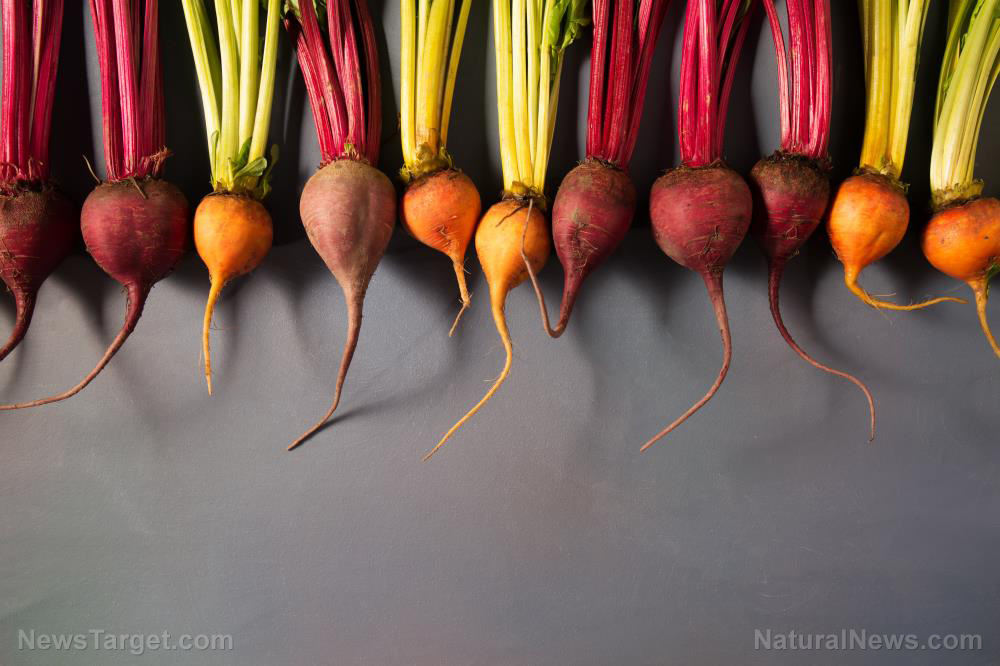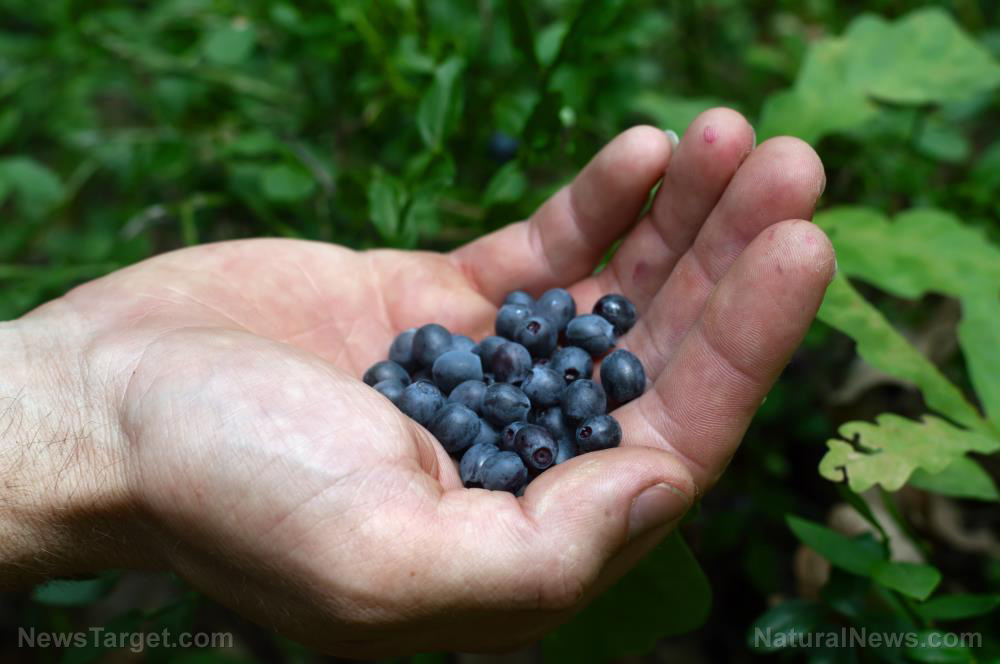
Advertisement
Some people may not like beetroot because of its earthy taste, and for the longest time, this root vegetable has been unjustly underappreciated. Even today, despite having joined the ranks of superfoods like Swiss chards, mustard greens and asparagus, many still find something to complain about when it comes to beetroots. But whether you like how it tastes or not, or whether you’re attracted to or repulsed by its color, beetroot is a bona fide superfood with a whole lot more nutrients to offer than many of its critics give it credit for.
A brief history of beets
As its name suggests, beetroot is the taproot portion of the beet plant, a fast-growing vegetable that comes in a variety of shapes, sizes and hues. While the roots of beets can also be pink, white, purple, golden or striped, beetroot typically refers to the deep red-colored variety. In case you’ve never encountered this vegetable before, here’s what it looks like:

According to historians, today’s beets are descended from black- or white-colored beets that grew along the coasts of the Mediterranean sea. These long, pointed beets were cultivated by the Ancient Greeks and Romans for their leaves, which served as vegetables at the time. It wasn’t until the end of the 15th century that humans began using the roots of these beets for food and for other things. By the late 1700s, other beet varieties have come to exist, and mangel-wurzels and sugar beets were grown for use as livestock fodder and as a natural sweetener, respectively.
Much like other vegetables, beets were brought to America in the 1800s by European immigrants. This is where the once elongated, black or white beets the Greeks and Romans loved developed into the red, bulbous or flat-bottomed root crops beets are commonly known as today.
What’s new with beetroot
Before beetroot became known for its benefits, it was relegated to nothing more than a pickled side dish. But after studies revealed what this vegetable can really do, people began experimenting with beetroot in the kitchen. According to nutritionists, this humble vegetable is a rich source of essential nutrients, such as vitamins B1, B2, B3, B9 and C, and minerals like potassium, phosphorus, manganese, iron, copper, selenium and zinc. Beetroot also contains beta carotene, a plant nutrient that’s turned into vitamin A by our bodies. Beta carotene is the same pigment that gives carrots their bright orange color.
But beetroot doesn’t get its characteristic red color from beta carotene; instead, it comes from betalains, which are known for their health benefits. Besides fighting inflammation, betalains also protect the liver from injury, act as antioxidants that boost immunity, improve physical performance and suppress the growth of cancer. Other notable nutrients found in beetroot include dietary fiber and alpha-lipoic acid (ALA), which improves digestion and lowers blood sugar levels, respectively. Beetroot is also a source of dietary nitrate.
A number of studies have linked substantial benefits to the consumption of nitrate-rich foods like beetroot. One particularly impressive finding about beetroot nitrate is that it can help reduce blood pressure in people with hypertension. Scientists have attributed this to nitrate’s ability to increase the production of nitric oxide, which is known to relax and dilate blood vessels. Researchers at the University of Guelph in Canada also discovered that beetroot nitrate can decrease muscle sympathetic nerve activity (MSNA) at rest and during exercise.
MSNA is a function of the sympathetic nervous system (SNS), which controls our involuntary responses to dangerous or stressful situations. MSNA regulates the contraction, or narrowing, of our blood vessel walls, which means it has a huge impact on blood pressure control. When Canadian researchers looked at the effects of drinking beetroot juice on 14 healthy men and women, they found that beetroot nitrate decreased their MSNA both at rest and during exercise. The researchers took this as proof that eating beetroot is good for the heart because it stops the SNS from becoming overactive. An overactive SNS is a characteristic of cardiovascular diseases like hypertension, ischemic heart disease and chronic heart failure.
Quick beetroot recipes to try
Some people can’t tolerate the earthy taste of beetroot unless it’s neutralized by vinegar. This is why pickled beetroot became a thing and continues to be a thing even today. If you’re ambivalent about trying this vegetable, start with pickled beetroot. People have been eating pickled beetroot for decades without complaints, and you’ll find that it makes for a very enjoyable side dish.
Pickled beetroot
Pickled beetroot is sold by the jar, but you may want to give this simple yet delicious recipe a try first: (h/t to BritishFoodHistory.com)
Ingredients:
- 2 kg beetroot
- 1 ¼ liters apple cider vinegar
- 15 g peppercorns
- 15 g allspice berries
Instructions:
- Remove the tops and tails of your beetroots but do not peel.
- Wash the vegetables and simmer in plain water for about 30 minutes or until tender.
- Boil the cider vinegar with the spices and let it simmer for 10 minutes.
- Strain the vinegar and let it cool together with the beetroots.
- Peel then slice the beetroots and place them in clean jars.
- Pour the strained, cooled vinegar into the jars and cover. Your pickled beetroots will be ready in two weeks. Enjoy.
Roasted beetroot
Another good way to make beetroots more palatable is to roast them. Roasting brings out the sweetness of beetroots without compromising their texture. And just like in the first recipe, remember not to peel beetroots until they’re fully cooked. (h/t to TheSpruceEats.com)
Ingredients:
- 8 freshly picked beetroots the size of tennis balls
- 3 tablespoons olive oil
- 1 teaspoon sea salt flakes
- 2 sprigs fresh thyme
Instructions:
- Preheat the oven to 400 F.
- Carefully wash the beetroots and take care not to break their skin. Pat dry with paper towels and cut the leaves on top, leaving only an inch or so of the stalk to make them easier to peel later.
- Place the beets in a roasting pan and drizzle with olive oil. Make sure they are well-covered with the oil before sprinkling with salt and thyme.
- Bake for about 40 to 45 minutes or until the beetroots are soft but not shrunken. Remove from the oven and let them cool.
- Once completely cool, rub the beetroots with paper towels to remove their skins. Wear gloves if you don’t want their juice to stain your hands. Cut off their roots and stalks.
- You can chop them into bite-size pieces or serve them whole as is. Season with salt and thyme as desired.
Roasted beetroots are great on their own or served with meats, salads or pasta. Enjoy this nutritious vegetable as part of a well-balanced diet, knowing full well that it can boost your heart health, enhance your immunity, improve your exercise performance and even help fight cancer!
Sources:
Academics.Hamilton.edu [PDF]
Advertisements







